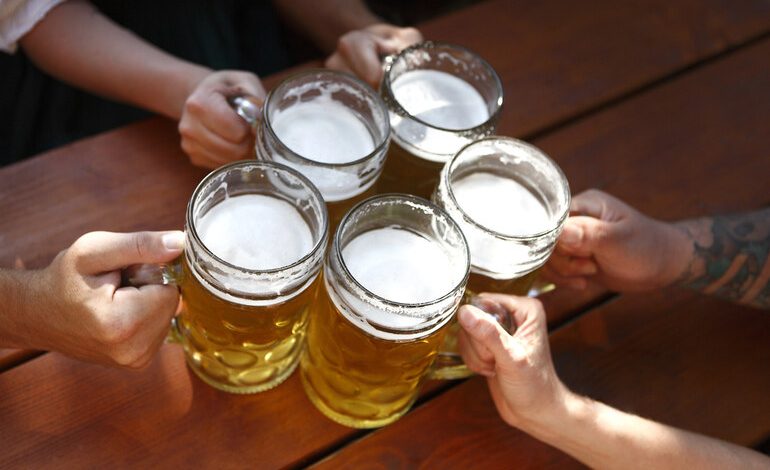Seven San Diego Winners at Brewers Cup of California

San Diego’s beer scene thrives on a simple bargain with drinkers. Deliver flavor, deliver freshness, deliver joy. This spring, seven county breweries met that bargain at the Brewers Cup of California, collecting gold in distinct style categories and reminding shoppers why medals matter when scanning a crowded shelf. The snapshot of local taste right now features bright hops, clean lagers, smart sours, confident darks, and malt-driven comfort that feels unmistakably coastal.
Hospitality teams feel these wins the moment medals are announced. Taprooms revise chalkboards, bottle shops reorder fast-moving labels, and staff refresh table-side scripts to highlight new champions. Seating flows also change when hype arrives, since medal traffic tends to bunch around peak hours. This is where tools like restaurant reservation software and tools quietly protect the guest experience, easing arrivals, pacing larger parties, and giving bartenders a fair chance to keep service smooth while a celebrated beer draws a line to the door.
Why Medals Matter on the Shelf
Medals matter for reasons that reach beyond pride. On a retail aisle crowded with hundreds of local options, shoppers rely on simple signals to cut through noise. A gold sticker compresses research and reduces risk. Judges have blind verified that the beer matches its stated style, so the badge functions as a quality proxy and a truth-in-labeling device. Demand spikes also tighten production schedules, which means faster turns and fresher beer on the shelf. That loop of recognition and velocity is something quality-minded drinkers can taste. For casual shoppers, the medal acts as navigation help that makes a new brand feel safe to try, even when the design is unfamiliar, a reminder of why beer medals matter in shaping trust and purchase decisions.
Style Portrait of the Seven
Each gold winner tells a style story that reads like a tour of the county. A specialty stout from a central city brewhouse shows cocoa on the nose, dark caramel through the middle, and a clean glide at the finish that invites another sip. An American brown from a neighborhood favorite brings gentle chocolate, nut tones, and a cola-like lift, then bows out before sweetness lingers. An imperial haze from a modernist producer layers mango and lychee over a satin body with bitterness held in check so fruit and grain can share the frame. An Irish-style red ale from a coastal institution answers with kilned malt, a caramel apple snap, and an easy pub rhythm that fits rainy evenings and post-beach afternoons alike.
Two-hop forward winners push in complementary directions. A New Zealand-style IPA sings with white grape and gooseberry from Nelson Sauvin and finishes crisp and dry, a natural match for fish tacos and bright ceviche. A continental-style pilsener brewed in North County leans on peppery noble aroma and mineral snap. In the right glass, with a deliberate pour, it offers repeatable refreshment that moves kegs quickly on warm weekends. The set rounds out with a mixed culture sour that carries stone fruit perfume and firm but respectful acidity. When staff frame that acidity as food-friendly rather than punishing, curious tasters often turn a sample into a full pour.
Field Notes from Behind the Bar
Bar managers across North Park, Miramar, and the coast report a recurring pattern. First-time guests who rarely leave the hazy lane will try an Irish red or a brown after hearing the word gold, and samples convert when the finish is clean. Medal-flagged pilseners can hit keg per shift velocity during weekends when glassware is rinsed properly and pours remain unhurried in order to preserve foam and sparkle. Mixed culture sours transform one-and-done tasters into sustained orders when servers discuss pairings rather than warnings, guiding guests toward cheese plates, citrus-bright salads, or seafood with a hint of fat to complement the acidity. These shifts in drinking habits reflect the rise of beer as more than a casual pour; it’s becoming an intentional choice shaped by style, service, and storytelling.
How to Taste the Moment
A simple self-guided tour can reveal why these wins matter. Begin with a crisp pilsner to establish a baseline, then step into the New Zealand-style IPA for a burst of perfume and zip. Move toward the brown for nut and chocolate comfort, and close with the stout to see how the city handles deeper shades without heaviness. If a taplist permits, add an imperial hazy to show how a fruit-forward aroma can coexist with balance and poise. The sequence highlights range and intent, and it rewards patience with clear transitions in texture, bitterness, and malt sweetness.
A Promise in Every Pour
These seven golds act as a compass for anyone who wants signal rather than noise. San Diego continues to win by brewing with care, by respecting style while inviting expression, and by thinking about the full journey from brewhouse to glass to table. Shelves respond with faster movement, bars respond with smoother service, and guests respond with repeat visits. The cycle is simple to describe and hard to fake. When a city keeps delivering beers that speak clearly, medals stop being trophies and start being promises kept, and it’s this same spirit that makes San Diego beer festivals such a true celebration of craft.

